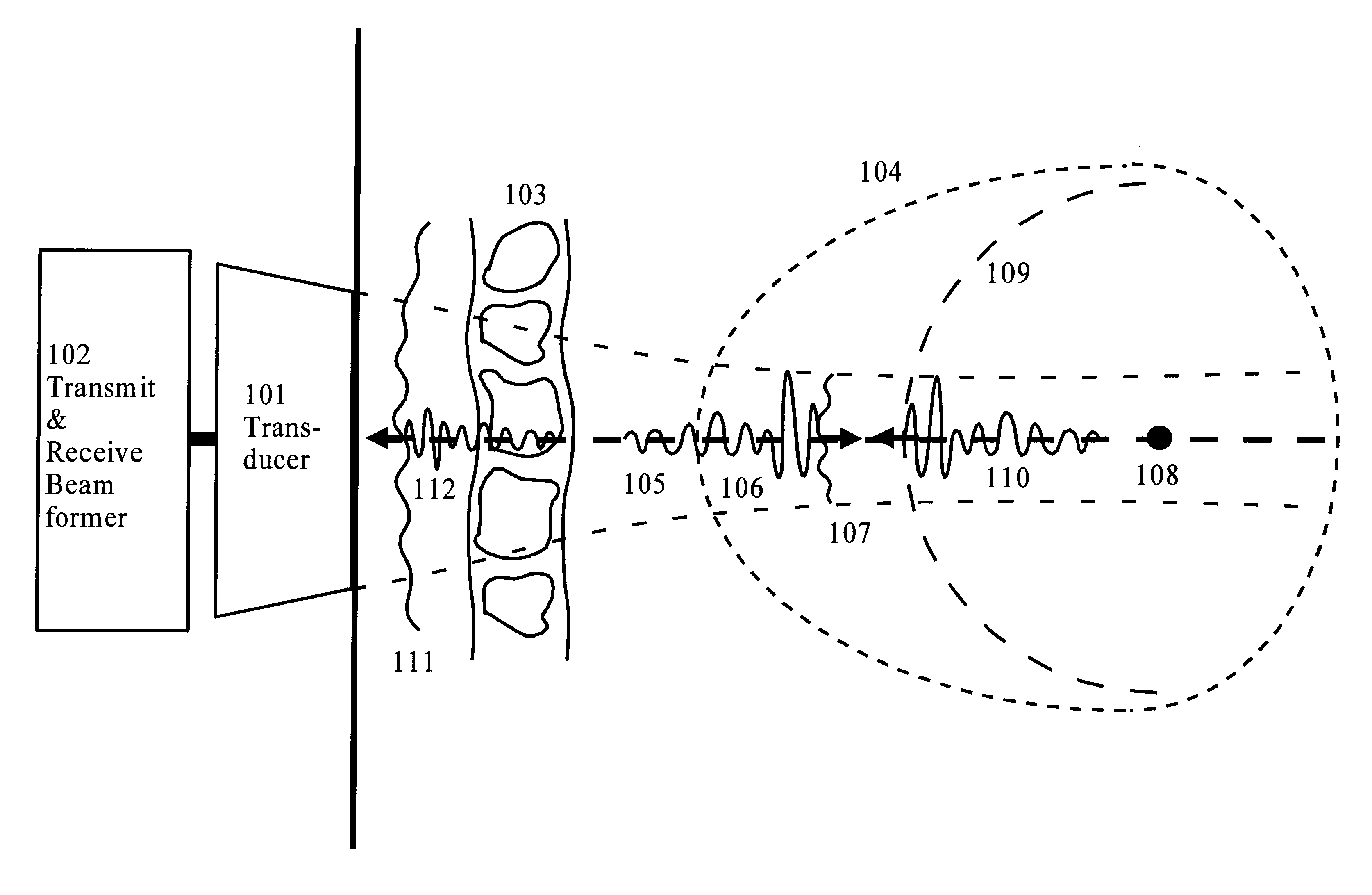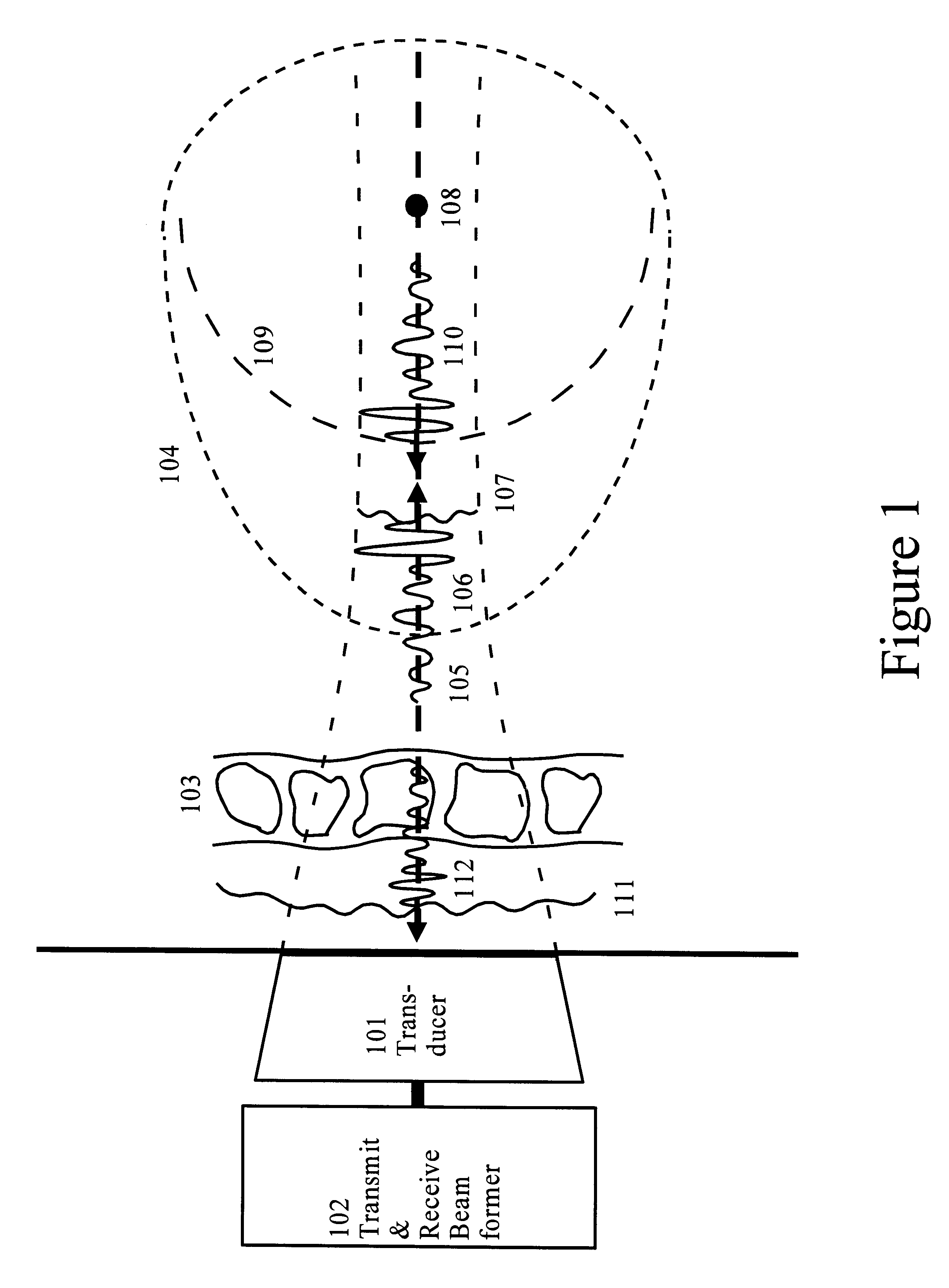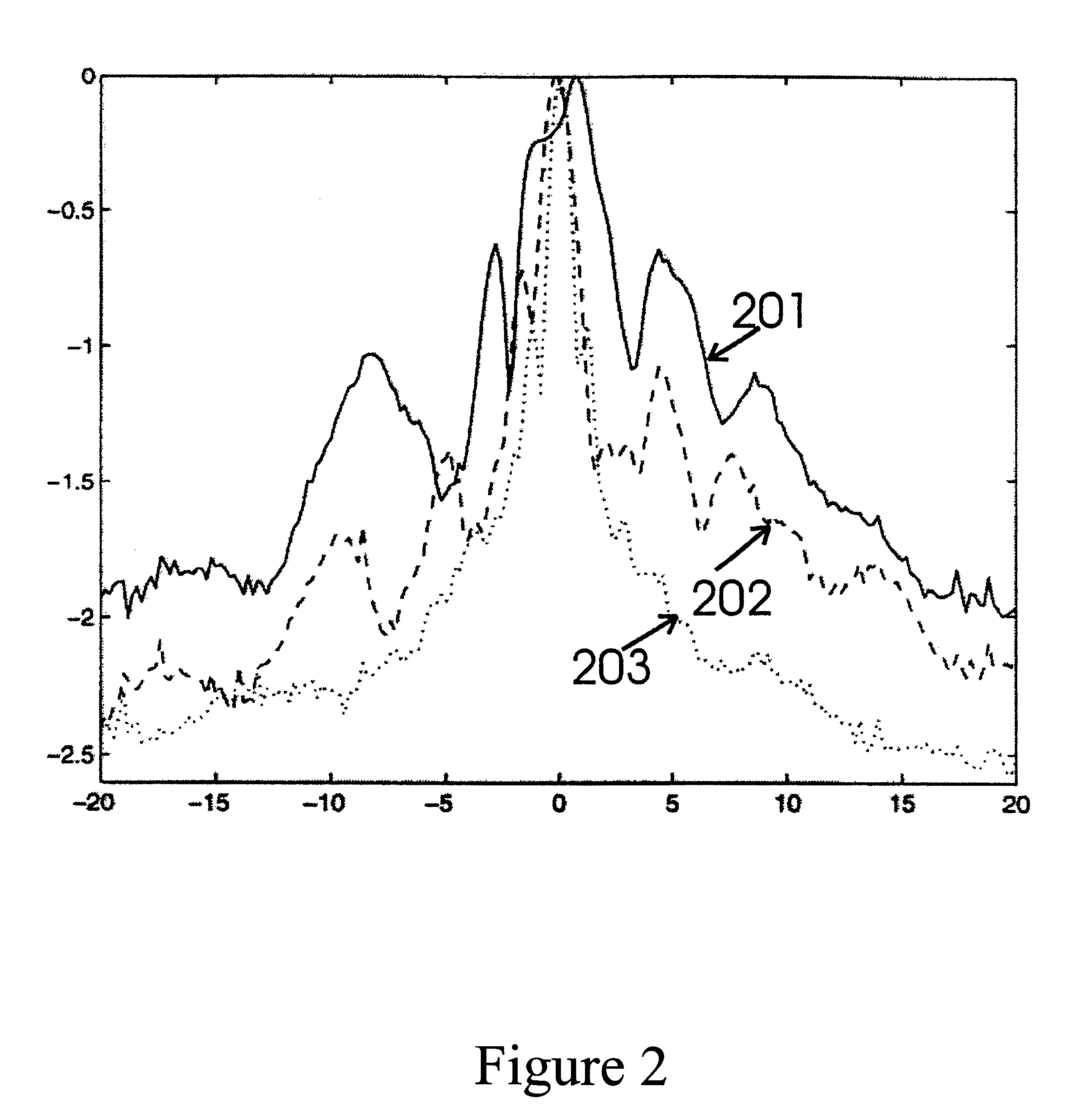Correction of phasefront aberrations and pulse reverberations in medical ultrasound imaging
a phasefront aberration and pulse reverberation technology, applied in the direction of reradiation, analysis of solids using sonic/ultrasonic/infrasonic waves, diagnostics, etc., can solve the problems of destroying increasing the beam sidelobe, and reducing the focusing of the beam main lob
- Summary
- Abstract
- Description
- Claims
- Application Information
AI Technical Summary
Problems solved by technology
Method used
Image
Examples
Embodiment Construction
FIG. 1 shows a typical measurement situation where an ultrasound transducer array (101) driven by a transmit beam former (102), transmits a pulsed and focused ultrasound beam through the body wall (103) towards an object (104) to be imaged. The body wall is a heterogeneous mixture of fat, muscles, and connective tissue with differences in acoustic velocity and characteristic impedance. Multiple reflections within the body wall and between structures in the body wall and the transducer, produces a reverberation tail (105) to the transmitted pulse (106) as it passes the wall. Similarly, the variations in the acoustic velocity produce aberrations of the phasefront (107) as the pulse passes the wall.
At reflection of the pulse from a point scatterer (108) within the object, a wave with spherical wave front (109) is reflected, while the temporal variation of the pulse with reverberation tail is preserved (110). In passing the body wall on its path back to the transducer array, aberrations...
PUM
 Login to View More
Login to View More Abstract
Description
Claims
Application Information
 Login to View More
Login to View More - R&D
- Intellectual Property
- Life Sciences
- Materials
- Tech Scout
- Unparalleled Data Quality
- Higher Quality Content
- 60% Fewer Hallucinations
Browse by: Latest US Patents, China's latest patents, Technical Efficacy Thesaurus, Application Domain, Technology Topic, Popular Technical Reports.
© 2025 PatSnap. All rights reserved.Legal|Privacy policy|Modern Slavery Act Transparency Statement|Sitemap|About US| Contact US: help@patsnap.com



